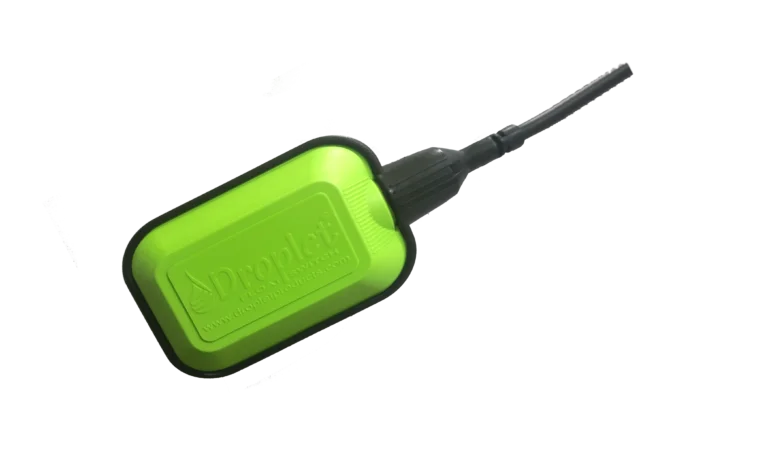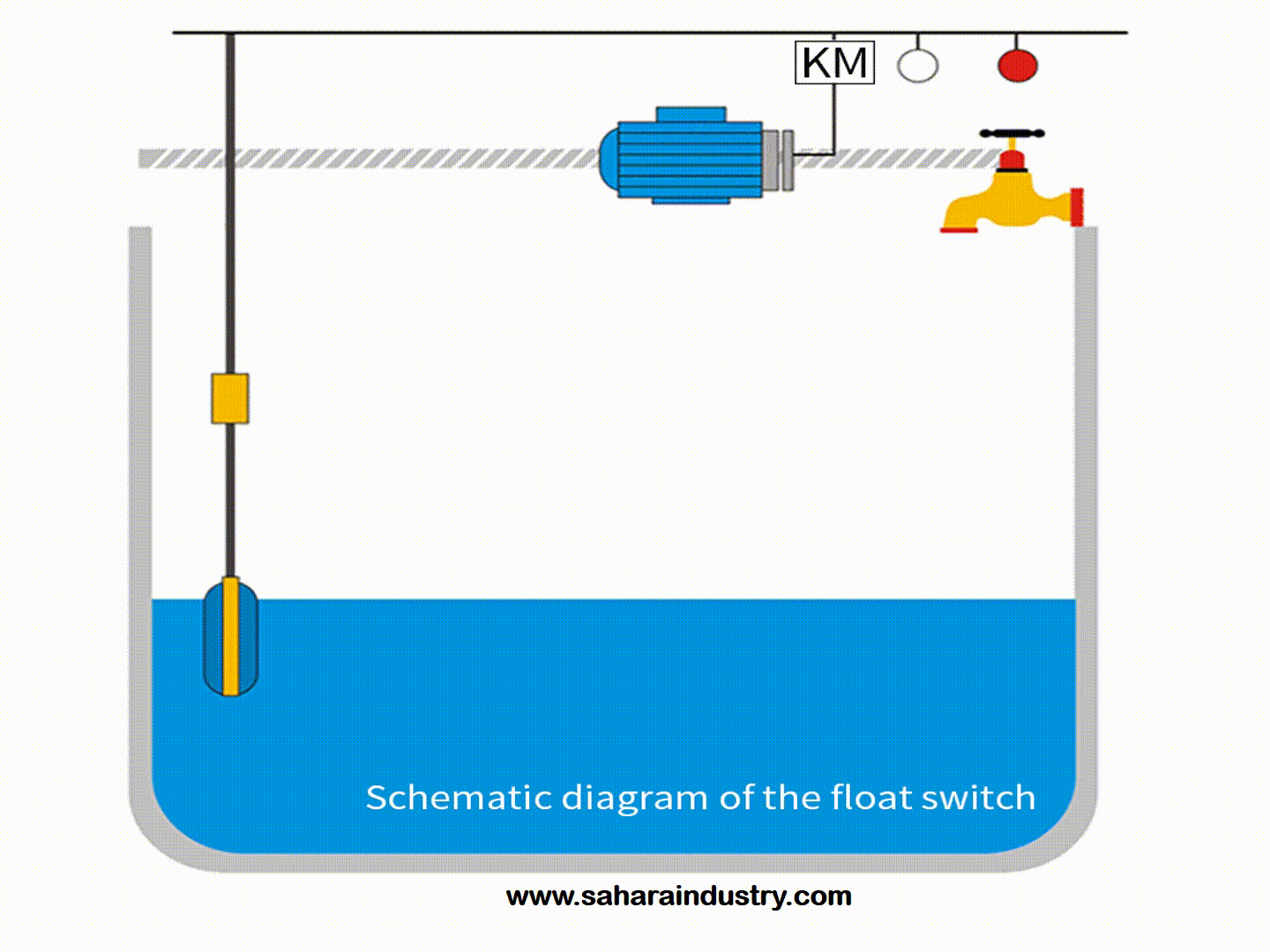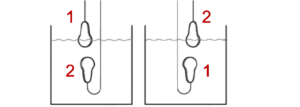Float Switch Level Switch
Overview

Float Switch Level Switch
SAHARA INDUSTRY is a global manufacturer of float switches and Supply with Brand Name “DROPLET”. The products are reliable, high quality, and proven within the industry. Available for a wide range of applications from clean non-turbulent water, sewage systems, to turbulent water.
Float Switch Level Switch
A float switch detects the level of a liquid in a tank or container. It floats on top of the liquid surface and acts as a mechanical switch as the liquid level goes up or down. They control devices like pumps (pump water in or out), valves (open or close inlet/outlets), or alarms to notify users. They are cost-effective, reliable, and can be used with a wide variety of liquids.
How Does A Float Switch Work?

In short, a float switch is a mechanical switch that floats on top of a liquid surface. As the liquid level goes up or down, it moves vertically with the liquid level. Depending on the counterweight and pre-set ‘trigger’, the mechanical switch opens or closes allowing an electrical current through it to the connected device. Typically, this connected device either stops or starts the inflow of the liquid.
A float switch consists of a hollow floating body and an internal switch, also called a sensor. The most common internal switch is a reed switch, so there is also a magnet inside the body. There are other types of internal switches, but the working principle that they open/close due to gravity and water level moving the float switch vertically up or down is the same. Therefore, the mechanical switch creates an open or closed electrical circuit.
Switching Method
For a reed switch, if the magnet is close to the reed switch it creates a closed circuit (electric current can flow). Therefore, if the magnet moves away the reed switch will create an open circuit (no electric current can flow). The switch has a maximum switching current and voltage, so ensure you do not exceed this specification. The liquid level controls the float switch’s angle, which directly controls the magnet’s position inside of it.
The vertical float switch installation either has a “fixed point” or an external counterweight. This preset level is the position that the internal mechanical switch goes between open and closed. Figure 2 on the left shows a common application of stopping the inflow of water at a “high” point in a water tank.
The floating body will rise with the water, which causes the magnet to move towards the reed switch and the switch closes. This closed electrical circuit then signals to a pump to stop pumping water into the tank. When the water level decreases, the float switch goes down and in turn moves the magnet away from the reed switch and opens the electrical circuit. The open-circuit then signals to a pump to turn on and pump water into the tank.
Figure 2 on the right shows a similar application, but it detects a “low” point in the water tank and works in reverse. Therefore, it is important to properly wire and to set the preset liquid level specifically for your application.
 Figure 2: Float switch installation examples of filling (left) or emptying (right). The #1 position signals to a pump to turn on or off, depending on its wiring.
Figure 2: Float switch installation examples of filling (left) or emptying (right). The #1 position signals to a pump to turn on or off, depending on its wiring.
External Counterweight
Float switches with an external counterweight (Figure 3) have set angles at which they operate. Therefore, the cable length from the counterweight to the float switch creates the angle with the water level. These switches have a minimum and a maximum cable length to ensure proper function. Therefore, they can be installed differently if it’s used to start or stop the inflow of liquid.
 Figure 3: Float switch with a counterweight in a water application.
Figure 3: Float switch with a counterweight in a water application.
Float Switch Level Switch Wiring
The float switch wiring is important for proper electrical signals based on the switches open or closed position. Below is how a common normally closed or normally open float switch works, but “normal” operation may be different for different float switch brands and types. Please read your products manual on how to wire it in either configuration.
- Normally closed float switch:The electrical circuit is closed in the down position and open in the up position. So, with gravity pulling it down it is closed and as the liquid level rises to the pre-set level it will open.
- Normally open float switch:The electrical circuit is open in the down position and closed in the up position. So, with gravity pulling it down it is open and as the liquid level rises to the pre-set level it will close.
Common Float Switch Applications
A float switch monitors the liquid level in various residential and industrial applications and is typically connected to a pump, valve (solenoid valve, electric ball valve, etc.), or an alarm to notify a user. Due to the variety of designs and types, they can be used in a wide variety of applications. Common examples are:
- Sump pump float switches can detect and actuate a pump to prevent from rising water level in the sump pit. They can be used in sump and sewage pits.
- Water tank float switches can help in water level control for potable water, rainwater, wastewater, and sewage application. The pump switches on/off with the rise/fall of the float switch in the water.
- Refrigerant and air conditioning use them for water level control.
- The beverage industry uses float switches for filling or emptying the beverage tanks.
- Industrial washers use them to monitor the washer water level.
FAQ
What Is A Float Switch?
A float switch detects the level of a liquid in a tank. Based on the water level, it will open or close an electrical circuit generally used to pump water in or out of the tank.
How Does A Float Switch Work?
A float switch moves with the liquid level up and down. An internal mechanical switch opens or closes an electrical circuit with gravity. Therefore, the electrical circuit can turn on/off equipment, like a water pump.
What Does A Float Switch Do?
A float switch monitors the level of a liquid in a tank. It then opens or closes an electrical circuit based on the liquid level and wiring to control external components.
How Do You Install A Float Switch?
A float switch is installed in a liquid tank. Firstly, a pre-set level is made and can be done with a counterweight. Then, based on a normally open or closed wiring configuration, it will open or close the electrical circuit based on its movement up or down with the liquid level.
How To Wire A Float Switch?
A float switch is wired in either the normally open or normally closed position. A normally open position is open when down (low liquid level) and a normally closed position is closed when down. The open/closed position refers to the electrical circuit.
Water Tank Float Switch Wiring Diagram Example?
Figure 2 shows an example of a water tank float switch example and how normally open or normally closed changes how the electrical circuit affects it. Read your products manual to understand how to wire it.
How To Install A Sump Pump Float Switch?
A sump pump float switch detects a rise in water in a sump pump. Commonly installed in the normally closed position, so as the water rises its electrical circuit will close. This allows current to pass to signal a pump to pump water out of the tank.
Our Clients
High-Quality Water Treatment Solutions For Various Industries


















